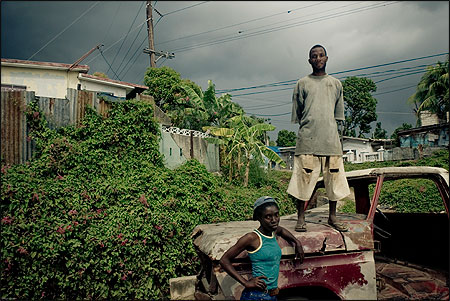Story
 September 9, 2010
September 9, 2010
The Sometimes Bumpy Nonprofit Ride Into Digital Foreign Correspondence
Country:

The Pulitzer Center on Crisis Reporting began with a simple idea—that we could leverage small travel grants to journalists to assure multiple voices on big global issues and at the same time help talented individuals sustain careers as foreign correspondents. Five years and some 150 projects later those remain key goals but our mission has expanded—and with it our sense of what is required of nonprofit journalism initiatives like the Pulitzer Center.
Some lessons we've learned:
Collaboration: Our best projects have entailed partnerships with multiple organizations and outlets. We developed our expertise on video by producing several dozen short pieces for the now defunct public television program "Foreign Exchange With Fareed Zakaria," for example, and we extended our audience by partnering with YouTube on its first video reporting contest. In our project on Sudan we are collaborating with The Washington Post to support the work of journalist/attorney Rebecca Hamilton and funding complementary coverage on "PBS NewsHour." We have worked in tandem with "NewsHour" and National Geographic to promote our common work on the global water crisis. In these and other reporting initiatives we have recruited donors with an interest in raising the visibility of systemic issues—and an appreciation that the journalism cannot succeed unless there is an assurance of absolute independence in our work.
Multimedia and the Web: I began the Pulitzer Center with no video experience, thinking that our focus would be enterprise print projects of the sort I had done over three decades as a correspondent for the St. Louis Post-Dispatch. I learned the power of video in the center's first project, a trip I made with African Union peacekeeper forces in Darfur. At the suggestion of "Foreign Exchange," I recruited Egyptian videographer Abdul Nasser Abdoun. The footage we collected led to a video report for "Foreign Exchange," a televised panel of experts at the U.S. Holocaust Memorial Museum, and a longer documentary that we showed at three dozen universities—a far greater reach, in short, than the print report I wrote for the Post-Dispatch. Multimedia presentations have been a hallmark of Pulitzer projects ever since—from the photojournalism of Sean Gallagher in China and Fred de Sam Lazaro's television reporting on food and water to immersive Web experiences such as "Hope: Living & Loving With HIV in Jamaica" that is built on the poetry of Kwame Dawes and won an Emmy last year for new approaches to news and documentaries. Livehopelove.com was an unconventional take on an important issue but it led to an abundance of conventional news-media coverage—from essays in The Washington Post and Virginia Quarterly Review to a featured interview on "NewsHour" and a one-hour radio documentary that aired on dozens of public radio stations. Projects like this have also given us rich visual assets to enhance the presentation of our work online, especially through the Gateway portals on our site that draw from our reporting around the world to address issues such as climate change, fragile states, and women and children in crisis...
Read the full article at Nieman Reports.
Support our work
Your support ensures great journalism and education on underreported and systemic global issues
